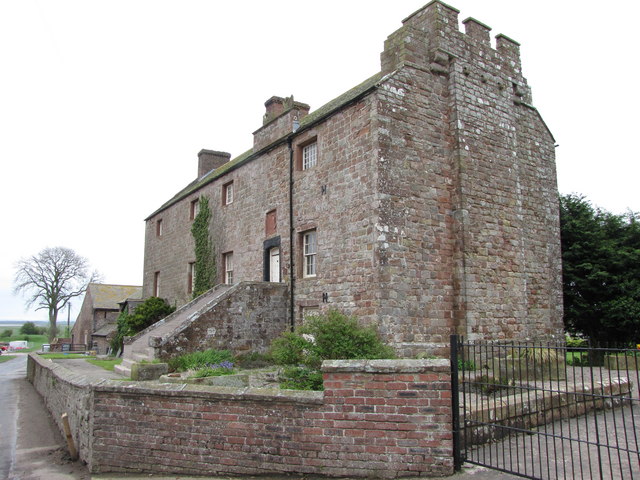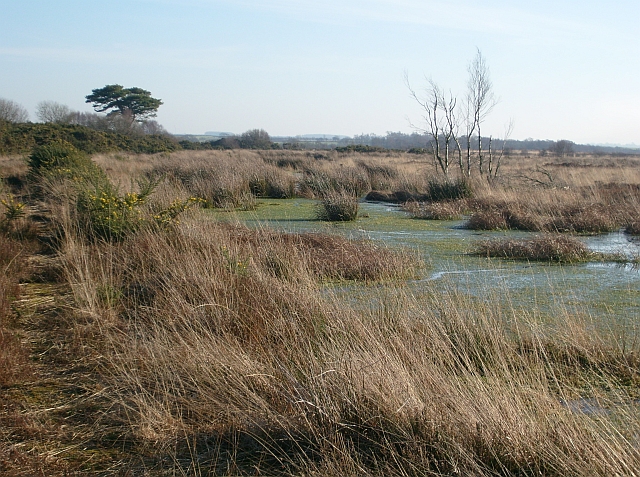Drumburgh on:
[Wikipedia]
[Google]
[Amazon]
Drumburgh ( ) is a small settlement in
 In the 14th century a peel tower house known as Drumburgh Castle was built here by Thomas, Lord Dacre, whose coat of arms are placed over an entrance at second-floor level.
In the 14th century a peel tower house known as Drumburgh Castle was built here by Thomas, Lord Dacre, whose coat of arms are placed over an entrance at second-floor level.
Retrieved : 2012-08-17
 The nature reserve of Drumburgh Moss (NGR NY 255 586 ) is a peat bog located immediately south of the village, purchased by the Cumbria Wildlife Trust in 1981; various extensions have been purchased since then. It is a Site of Special Scientific Interest (SSSI), a National Nature Reserve (NNR), and a Special Area of Conservation (SAC).
The nature reserve of Drumburgh Moss (NGR NY 255 586 ) is a peat bog located immediately south of the village, purchased by the Cumbria Wildlife Trust in 1981; various extensions have been purchased since then. It is a Site of Special Scientific Interest (SSSI), a National Nature Reserve (NNR), and a Special Area of Conservation (SAC).
Cumbria County History Trust: Bowness-on-Solway
(nb: provisional research only - see Talk page) {{authority control Hamlets in Cumbria Allerdale
Cumbria
Cumbria ( ) is a ceremonial and non-metropolitan county in North West England, bordering Scotland. The county and Cumbria County Council, its local government, came into existence in 1974 after the passage of the Local Government Act 1972. C ...
, England. It is northwest of the city of Carlisle and is on the course of Hadrian's Wall, near to Burgh by Sands
Burgh by Sands () is a village and civil parish in the City of Carlisle district of Cumbria, England, situated near the Solway Firth. The parish includes the village of Burgh by Sands along with Longburgh, Dykesfield, Boustead Hill, Moorhous ...
. The village is sited on a gentle hill with a good view in all directions over the surrounding lowlands.
History
The name means 'ridge near the fort' as derived from the Celtic language and the commonOld English
Old English (, ), or Anglo-Saxon, is the earliest recorded form of the English language, spoken in England and southern and eastern Scotland in the early Middle Ages. It was brought to Great Britain by Anglo-Saxon settlers in the mid-5th c ...
word 'burgh', pronounced as 'bruff' in this instance. Coggabata is the Roman fort referred to in the placename, which was linked by a Roman road to the nearby fort at Kirkbride to the southwest. The fort was located opposite a ford over the Solway Firth
The Solway Firth ( gd, Tràchd Romhra) is a firth that forms part of the border between England and Scotland, between Cumbria (including the Solway Plain) and Dumfries and Galloway. It stretches from St Bees Head, just south of Whitehaven ...
, and the site has been both partially overlain by modern housing and additionally it has been damaged by a substantial medieval ditch. John Leland visited in 1539 and reported that the Wall had been heavily robbed to provide for buildings in Drumburgh, such as the castle. The village lies in the old Barony of Burgh, dating from 1092, the baron now being the Earl of Lonsdale
Earl of Lonsdale is a title that has been created twice in British history, firstly in the Peerage of Great Britain in 1784 (becoming extinct in 1802), and then in the Peerage of the United Kingdom in 1807, both times for members of the Lowth ...
. The barony was a bulwark against Scottish invasion across the Solway In 1870-72 the township
A township is a kind of human settlement or administrative subdivision, with its meaning varying in different countries.
Although the term is occasionally associated with an urban area, that tends to be an exception to the rule. In Australia, C ...
had a population of 421.
Drumburgh Castle
 In the 14th century a peel tower house known as Drumburgh Castle was built here by Thomas, Lord Dacre, whose coat of arms are placed over an entrance at second-floor level.
In the 14th century a peel tower house known as Drumburgh Castle was built here by Thomas, Lord Dacre, whose coat of arms are placed over an entrance at second-floor level. Licence to crenellate
In medieval England, Wales and the Channel Islands a licence to crenellate (or licence to fortify) granted the holder permission to fortify his property. Such licences were granted by the king, and by the rulers of the counties palatine within th ...
the preceding tower had been granted in 1307 to Robert le Brun. It passed by marriage in the 15th century to Jacob Harington, but by 1480 it was ruinous. It again needed urgent repairs in 1580 and by 1593 it was simply a fortified farmhouse, occupied by a bailiff, with a datestone over the upper doorway that was inscribed 1518.
In 1646 Cuthbert Orfeur, a tenant of the Earl of Arundel
Earl of Arundel is a title of nobility in England, and one of the oldest extant in the English peerage. It is currently held by the Duke of Norfolk, and is used (along with the Earl of Surrey) by his heir apparent as a courtesy title. The ...
, complained that he had been forcibly removed from the old castle by Lord Dacre's agent. In 1678 the Duke of Norfolk
Duke of Norfolk is a title in the peerage of England. The seat of the Duke of Norfolk is Arundel Castle in Sussex, although the title refers to the county of Norfolk. The current duke is Edward Fitzalan-Howard, 18th Duke of Norfolk. The dukes ...
sold the building to John Aglionby and by 1696 Sir John Lowther was the owner and during his time alteration works were carried out. After a long period of neglect it was fully restored as a private dwelling in the 1970s. It has extremely thick walls built with stones taken from Hadrian's Wall.
Transport
Canals
The Carlisle Navigation Canal (1821–1853) ran in a straight cut fromBurgh by Sands
Burgh by Sands () is a village and civil parish in the City of Carlisle district of Cumbria, England, situated near the Solway Firth. The parish includes the village of Burgh by Sands along with Longburgh, Dykesfield, Boustead Hill, Moorhous ...
to Drumburgh before turning east to avoid Drumbugh Hill and reaching the Solway at Port Carlisle
Port Carlisle is a coastal village in Allerdale, Cumbria, England. It is in the civil parish of Bowness-on-Solway. Its original name was Fisher's Cross, but when it became the terminus of the Carlisle Canal it was renamed Port Carlisle. Durin ...
. The Port Carlisle Railway Company filled in the canal and rail passenger services commenced in 1854.
Railways
Drumburgh railway station was a junction forPort Carlisle
Port Carlisle is a coastal village in Allerdale, Cumbria, England. It is in the civil parish of Bowness-on-Solway. Its original name was Fisher's Cross, but when it became the terminus of the Carlisle Canal it was renamed Port Carlisle. Durin ...
on the old branch line to Silloth
Silloth (sometimes known as Silloth-on-Solway) is a port town and civil parish in the Allerdale borough of Cumbria, England. Historically in the county of Cumberland, the town is an example of a Victorian seaside resort in the North of Engl ...
. It had an island platform and a signal box. A horse-drawn passenger service was provided between Drumburgh and Port Carlisle
Port Carlisle is a coastal village in Allerdale, Cumbria, England. It is in the civil parish of Bowness-on-Solway. Its original name was Fisher's Cross, but when it became the terminus of the Carlisle Canal it was renamed Port Carlisle. Durin ...
from 1856, replaced in 1914 by steam propulsion until a steam railmotor 'Flower of Yarrow' was introduced, running until the branch closed in 1932.Cumbria RailwaysRetrieved : 2012-08-17
Natural history
 The nature reserve of Drumburgh Moss (NGR NY 255 586 ) is a peat bog located immediately south of the village, purchased by the Cumbria Wildlife Trust in 1981; various extensions have been purchased since then. It is a Site of Special Scientific Interest (SSSI), a National Nature Reserve (NNR), and a Special Area of Conservation (SAC).
The nature reserve of Drumburgh Moss (NGR NY 255 586 ) is a peat bog located immediately south of the village, purchased by the Cumbria Wildlife Trust in 1981; various extensions have been purchased since then. It is a Site of Special Scientific Interest (SSSI), a National Nature Reserve (NNR), and a Special Area of Conservation (SAC).
Micro-history
In 1821 Thomas Clark, a blacksmith from Drumburgh, was arrested on a charge of stabbing a labourer on the new canal.Ramshaw, Page 15See also
* Listed buildings in BownessReferences
;Notes ;Sources # Lee, Joan (1998). ''The Place Names of Cumbria''. Cumbria County Council. . # Ramshaw, David (1997). ''The Carlisle Navigation Railway''. Carlisle : P3 Publications. . # Salter, Mike (1998). ''The Castles and Tower Houses of Cumbria.'' Malvern : Folly Publication. .External links
Cumbria County History Trust: Bowness-on-Solway
(nb: provisional research only - see Talk page) {{authority control Hamlets in Cumbria Allerdale